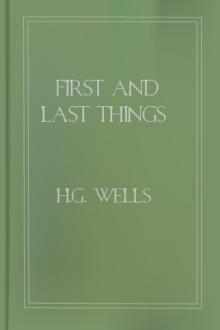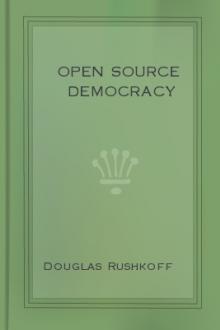The Library, Andrew Lang [online e book reading txt] 📗

- Author: Andrew Lang
- Performer: -
Book online «The Library, Andrew Lang [online e book reading txt] 📗». Author Andrew Lang
There was a full series of intermediate books, showing the gradual growth of the picture.
With regard to chronology, it may be roughly asserted that the earliest books which occur are Psalters of the thirteenth century.
Next to them come Bibles, of which an enormous issue took place before the middle of the fourteenth century. These are followed by an endless series of books of Hours, which, as the sixteenth century is reached, appear in several vernacular languages. Those in English, being both very rare and of great importance in liturgical history, are of a value altogether out of proportion to the beauty of their illuminations. Side by side with this succession are the Evangelistina, which, like the example mentioned above, are of the highest merit, beauty, and value; followed by sermons and homilies, and the Breviary, which itself shows signs of growth as the years go on. The real Missal, with which all illuminated books used to be confounded, is of rare occurrence, but I have given a collation of it also. Besides these devotional or religious books, I must mention chronicles and romances, and the semi-religious and moral allegories, such as the “Pelerinage de l’Ame,” which is said to have given Bunyan the machinery of the “Pilgrim’s Progress.” Chaucer’s and Gower’s poetry exists in many MSS., as does the “Polychronicon”
of Higden; but, as a rule, the mediaeval chronicles are of single origin, and were not copied. To collate MSS. of these kinds is quite impossible, unless by carefully reading them, and seeing that the pages run on without break.
I should advise the young collector who wishes to make sure of success not to be too catholic in his tastes at first, but to confine his attention to a single period and a single school. I should also advise him to make from time to time a careful catalogue of what he buys, and to preserve it even after he has weeded out certain items. He will then be able to make a clear comparative estimate of the importance and value of his collection, and by studying one species at a time, to become thoroughly conversant with what it can teach him. When he has, so to speak, burnt his fingers once or twice, he will find himself able to distinguish at sight what no amount of teaching by word of mouth or by writing could ever possibly impart to any advantage.
One thing I should like if possible to impress very strongly upon the reader. That is the fact that a MS. which is not absolutely perfect, if it is in a genuine state, is of much more value than one which has been made perfect by the skill of a modern restorer. The more skilful he is, that is to say the better he can forge the style of the original, the more worthless he renders the volume.
Printing seems to have superseded the art of the illuminator more promptly and completely in England than on the Continent. The dames galantes of Brantome’s memoirs took pleasure in illuminated Books of Hours, suited to the nature of their devotions. As late as the time of Louis XIV., Bussy Rabutin had a volume of the same kind, illuminated with portraits of “saints,” of his own canonisation.
The most famous of these modern examples of costly MSS. was “La Guirlande de Julie,” a collection of madrigals by various courtly hands, presented to the illustrious Julie, daughter of the Marquise de Rambouillet, most distinguished of the Precieuses, and wife of the Duc de Montausier, the supposed original of Moliere’s Alceste.
The MS. was copied on vellum by Nicholas Jarry, the great calligraph of his time. The flowers on the margin were painted by Robert. Not long ago a French amateur was so lucky as to discover the MS. book of prayers of Julie’s noble mother, the Marquise de Rambouillet.
The Marquise wrote these prayers for her own devotions, and Jarry, the illuminator, declared that he found them most edifying, and delightful to study. The manuscript is written on vellum by the famous Jarry, contains a portrait of the fair Julie herself, and is bound in morocco by Le Gascon. The happy collector who possesses the volume now, heard vaguely that a manuscript of some interest was being exposed for sale at a trifling price in the shop of a country bookseller. The description of the book, casual as it was, made mention of the monogram on the cover. This was enough for the amateur. He rushed to a railway station, travelled some three hundred miles, reached the country town, hastened to the bookseller’s shop, and found that the book had been withdrawn by its owner. Happily the possessor, unconscious of his bliss, was at home. The amateur sought him out, paid the small sum demanded, and returned to Paris in triumph. Thus, even in the region of manuscript-collecting, there are extraordinary prizes for the intelligent collector.
TO KNOW IF A MANUSCRIPT IS PERFECT
If the manuscript is of English or French writing of the twelfth, thirteenth, fourteenth, or fifteenth centuries, it is probably either—(1) a Bible, (2) a Psalter, (3) a book of Hours, or (4), but rarely, a Missal. It is not worth while to give the collation of a gradual, or a hymnal, or a processional, or a breviary, or any of the fifty different kinds of service-books which are occasionally met with, but which are never twice the same.
To collate one of them, the reader must go carefully through the book, seeing that the catchwords, if there are any, answer to the head lines; and if there are “signatures,” that is, if the foot of the leaves of a sheet of parchment has any mark for enabling the binder to “gather” them correctly, going through them, and seeing that each signed leaf has its corresponding “blank.”
1. To collate a Bible, it will be necessary first to go through the catchwords, if any, and signatures, as above; then to notice the contents. The first page should contain the Epistle of St. Jerome to the reader. It will be observed that there is nothing of the nature of a title-page, but I have often seen title-pages supplied by some ignorant imitator in the last century, with the idea that the book was imperfect without one. The books of the Bible follow in order—but the order not only differs from ours, but differs in different copies. The Apocryphal books are always included. The New Testament usually follows on the Old without any break; and the book concludes with an index of the Hebrew names and their signification in Latin, intended to help preachers to the figurative meaning of the biblical types and parables. The last line of the Bible itself usually contains a colophon, in which sometimes the name of the writer is given, sometimes the length of time it has taken him to write, and sometimes merely the “Explicit. Laus Deo,”
which has found its way into many modern books. This colophon, which comes as a rule immediately before the index, often contains curious notes, hexameters giving the names of all the books, biographical or local memoranda, and should always be looked for by the collector. One such line occurs to me. It is in a Bible written in Italy in the thirteenth century -
“Qui scripsit scribat. Vergilius spe domini vivat.”
Vergilius was, no doubt, in this case the scribe. The Latin and the writing are often equally crabbed. In the Bodleian there is a Bible with this colophon -
“Finito libro referemus gratias Christo m.cc.lxv. indict. viij.
Ego Lafracus de Pacis de Cmoa scriptor scripsi.”
This was also written in Italy. English colophons are often very quaint—“Qui scripsit hunc librum fiat collocatus in Paradisum,” is an example. The following gives us the name of one Master Gerard, who, in the fourteenth century, thus poetically described his ownership:-
“Si Ge ponatur—et rar simul associatur -
Et dus reddatur—cui pertinet ita vocatur.”
In a Bible written in England, in the British Museum, there is a long colophon, in which, after the name of the writer—“hunc librum scripsit Wills de Hales,”—there is a prayer for Ralph of Nebham, who had called Hales to the writing of the book, followed by a date-
-“Fes. fuit liber anno M.cc.i. quarto ab incarnatione domini.” In this Bible the books of the New Testament were in the following order:- the Evangelists, the Acts, the Epistles of S. Peter, S.
James, and S. John, the Epistles of S. Paul, and the Apocalypse. In a Bible at Brussels I found the colophon after the index:- “Hic expliciunt interpretationes Hebrayorum nominum Do gris qui potens est p. sup. omia.” Some of these Bibles are of marvellously small dimensions. The smallest I ever saw was at Ghent, but it was very imperfect. I have one in which there are thirteen lines of writing in an inch of the column. The order of the books of the New Testament in Bibles of the thirteenth century is usually according to one or other of the three following arrangements:-
(1.) The Evangelists, Romans to Hebrews, Acts, Epistles of S.
Peter, S. James, and S. John, Apocalypse.
(2.) The Evangelists, Acts, Epistles of S. Peter, S. James, and S.
John, Epistles of S. Paul, Apocalypse. This is the most common.
(3.) The Evangelists, Acts, Epistles of S. Peter, S. James, and S.
John, Apocalypse, and Epistles of S. Paul.
On the fly leaves of these old Bibles there are often very curious inscriptions. In one I have this:- “Haec biblia emi Haquinas prior monasterii Hatharbiensis de dono domini regis Norwegie.” Who was this King of Norway who, in 1310, gave the Prior of Hatherby money to buy a Bible, which was probably written at Canterbury? And who was Haquinas? His name has a Norwegian sound, and reminds us of St.
Thomas of that surname. In another manuscript I have seen “Articula Fidei:-
Nascitur, abluitur, patitur, descendit at ima Surgit et ascendit, veniens discernere cuncta.”
In another this:-
“Sacramenta ecclesiae:-
Abluo, fumo, cibo, piget, ordinat, uxor et ungit.”
I will conclude these notes on MS. Bibles with the following colophon from a copy written in Italy in the fifteenth





Comments (0)